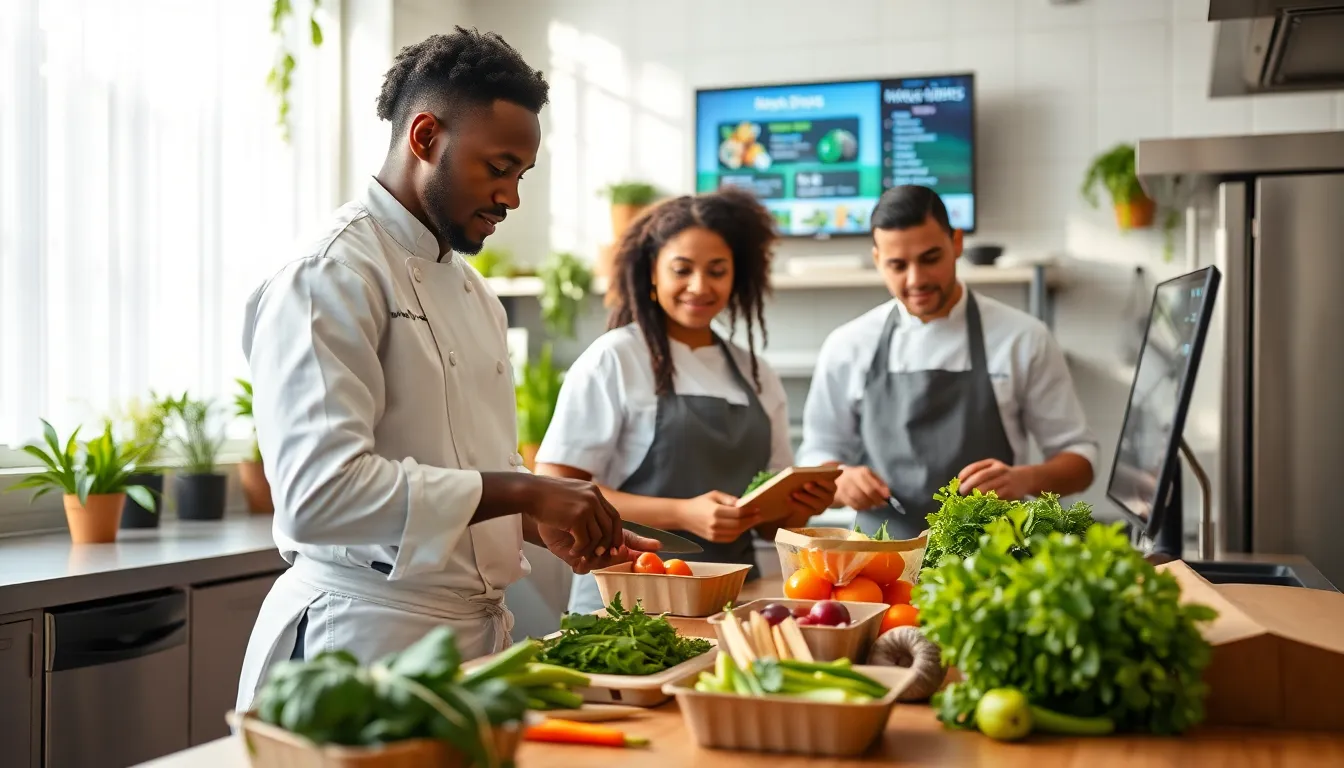The food and beverage industry is a dynamic world where the latest trends can flip a menu upside down overnight. Seriously, there’s a chance that your favorite dish could be replaced by a plant-based remix or a globally inspired flavor explosion. Today, it’s not just about what’s on the plate but how it impacts the planet and wellness. So, grab a snack as we jump into the tastiest trends reshaping this ever-evolving landscape.
Table of Contents
ToggleSustainability And Eco-Friendly Practices

With climate change knocking on our kitchen doors, sustainability has become the name of the game in the food and beverage industry. Companies are finding creative ways to reduce their carbon footprint, and consumers are all for it. From packaging innovations using biodegradable materials to sourcing ingredients locally, the efforts are abundant. Brands like Impossible Foods and Beyond Meat are not just offering meat alternatives: they are also leading the charge for sustainable sourcing practices. Notably, restaurants are now focusing on menu transparency, showcasing where their ingredients come from. The emphasis on reducing food waste through creative solutions, think composting, upcycling leftovers, and optimizing inventory, has also gained momentum. All these practices reflect a broader cultural shift. It’s not just a trend: it’s the future of how we nurture the planet while enjoying culinary delights.
Health-Conscious Consumer Choices
Health is on everyone’s mind, and it’s changing how they choose their meals. Once upon a time, people thought indulging meant compromising health. Not anymore. Today, consumers are savvy, opting for gluten-free, sugar-free, or keto-friendly options. They want meals packed with nutrients and devoid of artificial ingredients. Brands and restaurants are responding with innovative dishes that blend flavor with wellness. Think broccoli-infused smoothies and cauliflower crust pizzas gaining mega popularity. Food labels now flaunt nutritional benefits like ‘high in protein’ or ‘rich in Omega-3s.’ Also, functional beverages, those promising health benefits, are trending. Kombucha and adaptogenic lattes are not just drinks: they are lifestyle choices. As they say, you are what you eat, and people are striving to be stronger, healthier versions of themselves.
Technology Integration In Food Preparation
Technology is infiltrating the kitchen faster than you can say ‘Sous vide.’ Cooking appliances have become smart, and food preparation is a lot more efficient, thanks to robotic chefs and AI-driven recipe apps. Imagine stepping into a restaurant where food is prepped by robots that ensure consistency and precision, it’s not science fiction, it’s reality. Customer experience is welcoming digital innovations too. Online ordering has evolved into seamless app experiences where diners can customize their dishes with a swipe. Also, kitchen automation isn’t just for large corporations: small businesses are catching on to the benefits. Using technology to control inventory and reduce costs is essential to staying competitive in this fast-paced world. As culinary creativity combines with science, the kitchen’s future looks tastier and more innovative than ever.
Plant-Based And Alternative Proteins
The rise of the plant-based movement isn’t just a fad: it’s reshaping dining at every level. Consumers are curious about alternatives, seeking out options that align with their dietary preferences and ethical beliefs. Beyond just vegetarians and vegans, flexitarians, those who occasionally indulge in meat, are now a significant market. Brands like Oatly and Just Egg are making headlines by providing alternatives that mimic the taste and texture of traditional proteins. This shift isn’t limited to meat alternatives: dairy alternatives like nut milk and yogurt made from pea protein are also surging. As people become more eco-conscious, the demand for alternative proteins will continue to grow. Also, edible insects and lab-grown meats are slowly creeping into public acceptance. Who says dinner can’t be a little adventurous?
Global Flavors And Culinary Fusion
In a world where consumers can access flavors from all corners of the globe, culinary fusion is creating a mouthwatering melting pot. Restaurants are mixing cuisines, bringing together the best of different traditions on one plate. Think Korean tacos or Indian-inspired pizzas, this is where innovation meets creativity. People are more willing to explore, savoring rich cultural experiences through food. Ingredients like Sriracha or kimchi have found their way into mainstream dishes, demonstrating an appetite for diverse tastes. Social media plays a big role too: influencers are showcasing exotic recipes that tempt taste buds everywhere. As people travel and explore, they bring their gastronomic adventures back home, pushing chefs to experiment more. Flavor exploration is not just a trend: it’s a delicious journey that’s only beginning.
Evolving Dining Experiences
Dining is transforming from just a meal into an experience. Today, restaurants aim to engage all the senses. The rise of themed eateries, immersive environments, and interactive food experiences is sweeping across the industry. Imagine dining in the dark for an exhilarating sensory experience or eating surrounded by art installations. Famed chefs are pushing boundaries by integrating storytelling into their menus, where each dish has a narrative attached. Whether it’s for special occasions or casual outings, diners crave experiences that are Instagrammable and memorable. The pressure for customer engagement leads to innovative concepts expanding beyond traditional dining. Ghost kitchens and food trucks have surged in popularity, allowing chefs to reach wide audiences without expensive overhead costs. As technology continues to weave its influence, the evolution of dining is bound to become even more exciting.

